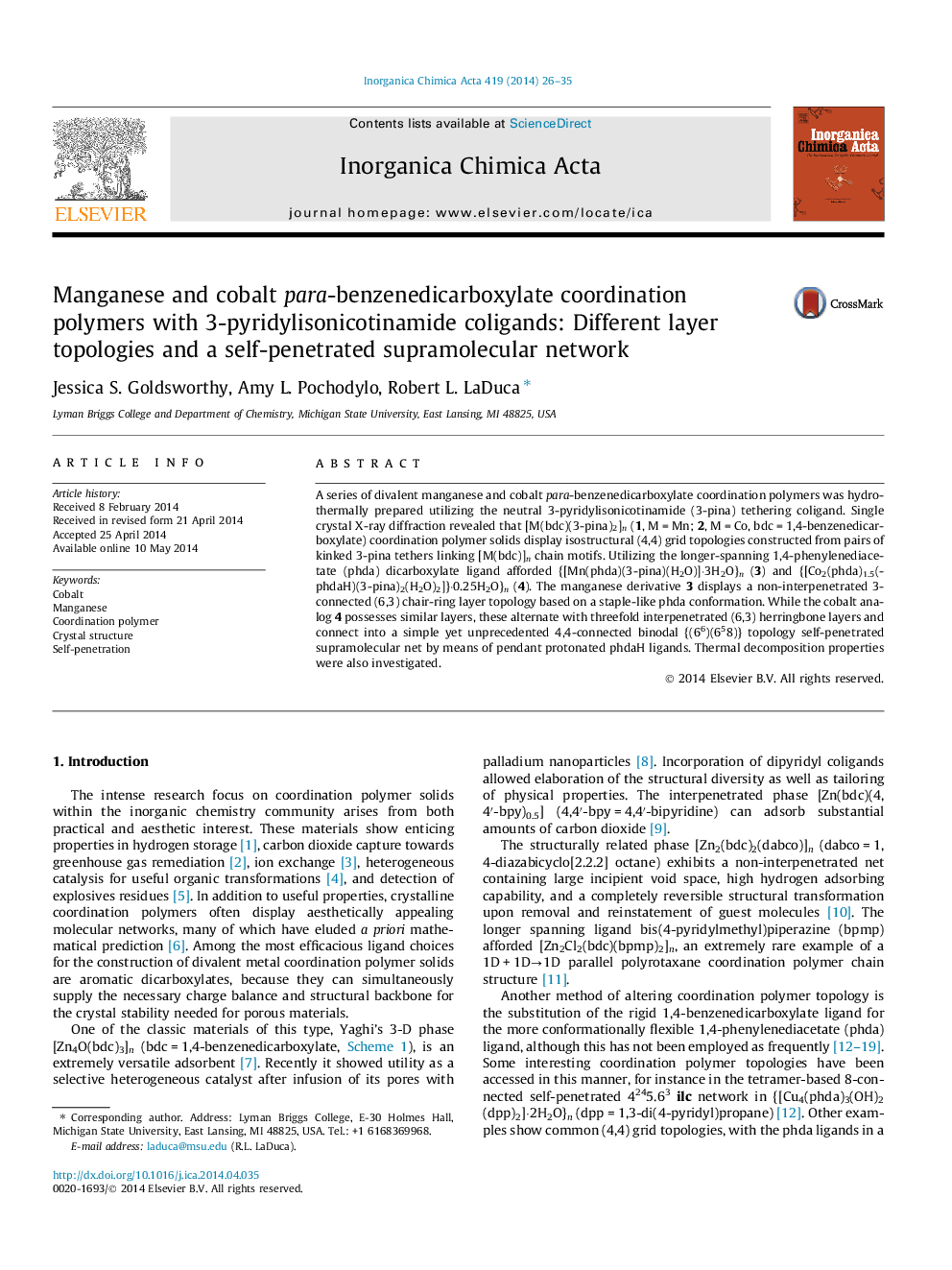| Article ID | Journal | Published Year | Pages | File Type |
|---|---|---|---|---|
| 1309600 | Inorganica Chimica Acta | 2014 | 10 Pages |
•Manganese cobalt coordination polymers with 3-pyridylisonicotinamide.•para-benzenedicarboxylate (bdc) or 1,4-phenylenediacetate (phda) ligands.•2-D (4,4) grid topologies with bdc in both Mn or Co cases.•2-D (6,3) chair-ring layer topology or 3-D self-penetrated net with phda.
A series of divalent manganese and cobalt para-benzenedicarboxylate coordination polymers was hydrothermally prepared utilizing the neutral 3-pyridylisonicotinamide (3-pina) tethering coligand. Single crystal X-ray diffraction revealed that [M(bdc)(3-pina)2]n (1, M = Mn; 2, M = Co, bdc = 1,4-benzenedicarboxylate) coordination polymer solids display isostructural (4,4) grid topologies constructed from pairs of kinked 3-pina tethers linking [M(bdc)]n chain motifs. Utilizing the longer-spanning 1,4-phenylenediacetate (phda) dicarboxylate ligand afforded {[Mn(phda)(3-pina)(H2O)]·3H2O}n (3) and {[Co2(phda)1.5(phdaH)(3-pina)2(H2O)2]}·0.25H2O}n (4). The manganese derivative 3 displays a non-interpenetrated 3-connected (6,3) chair-ring layer topology based on a staple-like phda conformation. While the cobalt analog 4 possesses similar layers, these alternate with threefold interpenetrated (6,3) herringbone layers and connect into a simple yet unprecedented 4,4-connected binodal {(66)(658)} topology self-penetrated supramolecular net by means of pendant protonated phdaH ligands. Thermal decomposition properties were also investigated.
Graphical abstractA series of divalent manganese and cobalt 1,4-benzenedicarboxylate (bdc) or 1,4-phenylenediacetate (phda) coordination polymers was prepared utilizing 3-pyridylisonicotinamide (3-pina). {[Co2(phda)1.5(phdaH)(3-pina)2(H2O)2]}·0.25H2O}n (4) shows a 4,4-connected binodal (66)(658) topology self-penetrated supramolecular net.Figure optionsDownload full-size imageDownload as PowerPoint slide
